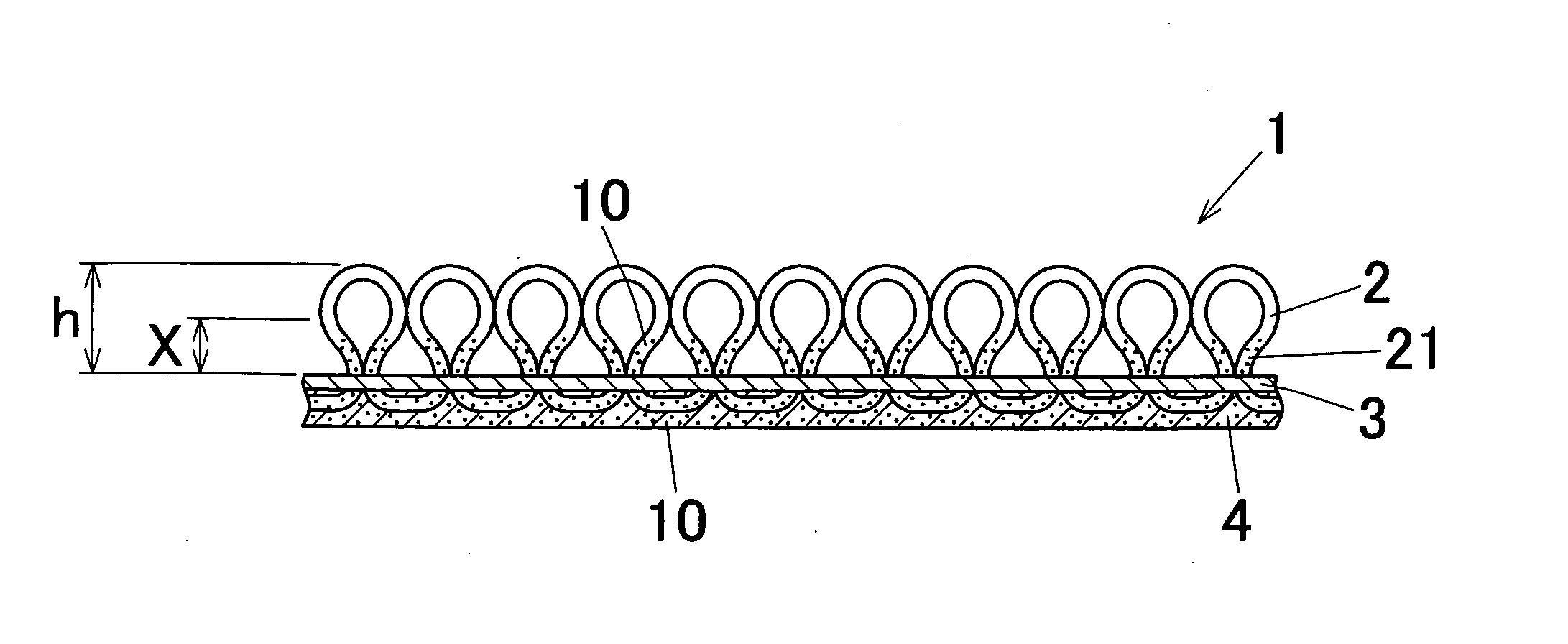Carpet and process for producing the same
- Summary
- Abstract
- Description
- Claims
- Application Information
AI Technical Summary
Benefits of technology
Problems solved by technology
Method used
Image
Examples
example 1
[0083] 50 mass parts tyrosine (allergen reducing agent) was dispersed in 100 mass parts water to obtain a solution, and 50 mass parts EVA resin was further dispersed into the solution to thereby obtain an aqueous dispersion. After applying this aqueous dispersion to one surface of a base fabric (tape yarn made of polypropylene fibers, the weight per unit area: 110 g / m2) by a spraying method, it was subjected to a dry treatment for 3 minutes at 110° C. to thereby obtain the base fabric with the allergen reducing agent adhering to the one surface. At this time, the adhered amount of the allergen reducing agent was 7 g / m2. Next, piles (pile weight per unit area: 700 g / m2) made of polyester fibers were implanted to the base fabric from the other surface thereof using a tufting machine to thereby form cut piles having a pile length of 7 mm at the allergen reducing agent adhered side. Thus, a carpet original fabric was obtained. Next, SBR latex (containing calcium carbonate as filler) was...
example 2
[0084] A carpet having a structure shown in FIG. 1 was obtained in the same manner as in Example 1 except that the adhered amount of the allergen reducing agent on the upper surface of the base fabric was set to 10 g / m2.
example 3
[0085] A carpet having a structure shown in FIG. 1 was obtained in the same manner as in Example 1 except that the adhered amount of the allergen reducing agent on the upper surface of the base fabric was set to 1.2 g / m2.
PUM
| Property | Measurement | Unit |
|---|---|---|
| Viscosity | aaaaa | aaaaa |
| Density | aaaaa | aaaaa |
| Density | aaaaa | aaaaa |
Abstract
Description
Claims
Application Information
 Login to View More
Login to View More - R&D
- Intellectual Property
- Life Sciences
- Materials
- Tech Scout
- Unparalleled Data Quality
- Higher Quality Content
- 60% Fewer Hallucinations
Browse by: Latest US Patents, China's latest patents, Technical Efficacy Thesaurus, Application Domain, Technology Topic, Popular Technical Reports.
© 2025 PatSnap. All rights reserved.Legal|Privacy policy|Modern Slavery Act Transparency Statement|Sitemap|About US| Contact US: help@patsnap.com


